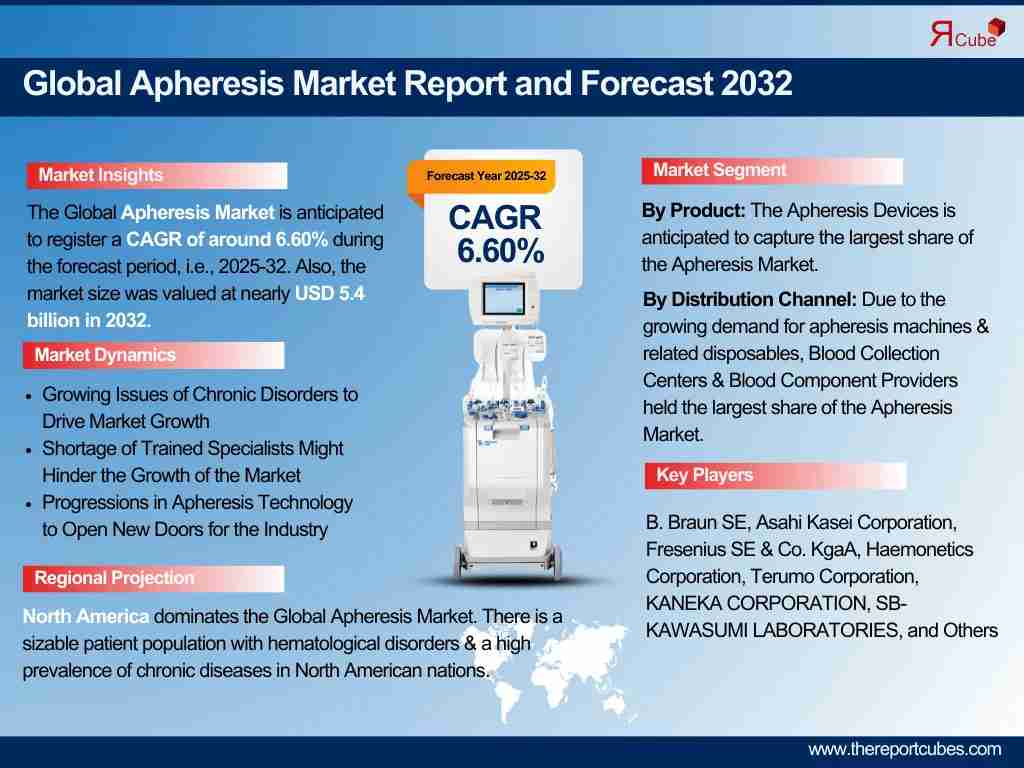Discover PostinganJelajahi konten yang menarik dan beragam perspektif di halaman Discover kami. Temukan ide-ide segar dan terlibat dalam percakapan yang bermakna
Global Apheresis Market Trends & Outlook Analysis 2025–2032
The Global Apheresis Market is anticipated to register a CAGR of around 6.60% during the forecast period, i.e., 2025-32. Also, the market size was valued at nearly USD 5.4 billion in 2032. The market size is been driven by the upgrade in the prevalence of chronic illnesses & technological developments in the healthcare industry. As apheresis aids in blood filtration & purification, it is utilized in several medical procedures, such as rheumatoid arthritis, cancer treatment, kidney disorders, and diabetes.
https://www.thereportcubes.com..../report-store/aphere









